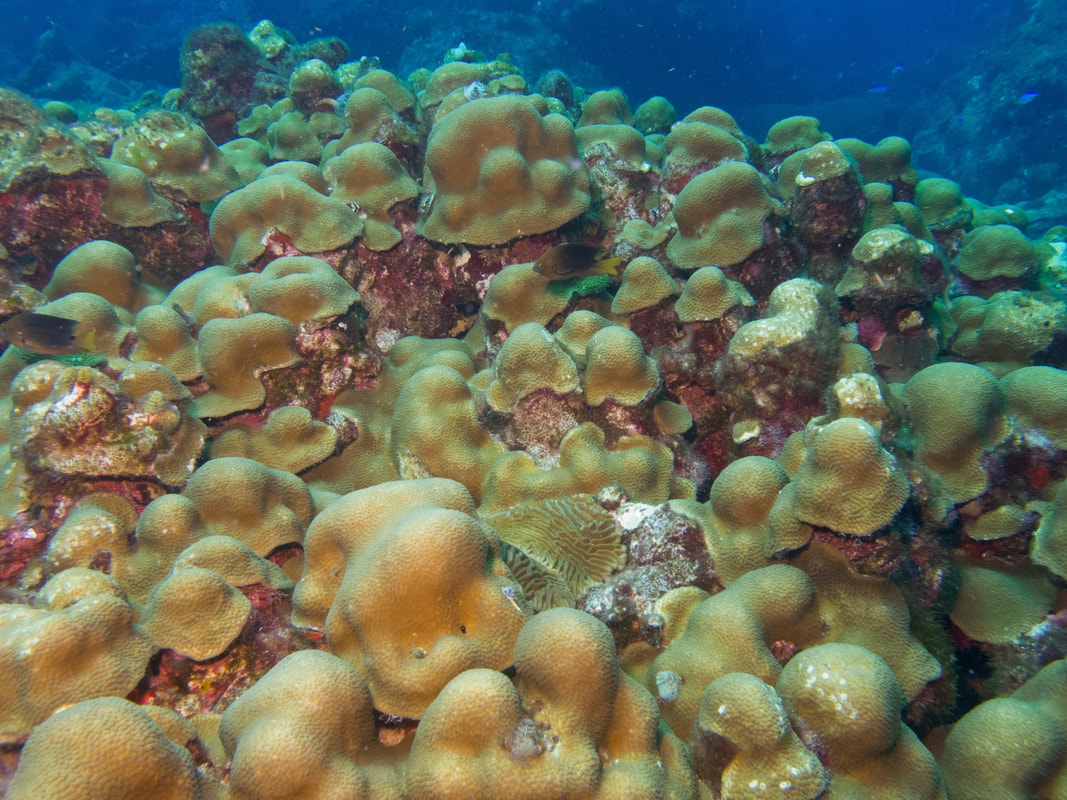|
Photo credit: Ryan Eckert/FGBNMS] — at NOAA's Flower Garden Banks National Marine Sanctuary. Lobed star coral (Orbicella annularis), also known as the boulder star coral, inhabits the tropical and subtropical regions of the western Atlantic, including the Gulf of Mexico and Caribbean Sea and Bermuda. It is reported to be the most abundant, and best studied of the reef-forming corals in the region.
Molecular studies of the Lobed star coral has recently determined that the “species” is actually a complex of three species; O. annularis, O. faveolata, and O. franksi. They are difficult to distinguish between in the field due to the differences at the genetic level, subtle morphological distinctions, and variations in the growth form based on light levels, among other factors. The O. annularis species complex has a wide depth range, being found from the low tide level down to as deep as 82 meters (≈ 270 ft.). The colonies can grow in a number of different shapes, including boulders, heads, plates and the “lumpy” type seen in the photo. These variations are attributed to differences in amount of sunlight that can reach the colony. Colonies can grow to up to grow to a diameter of 10 meters (≈ 33 ft.) and a height of 4 to 5 meters. (≈ 16 ft.). They can also live for hundreds of years and are important to providing framework for western Atlantic reefs. Unfortunately, Lobed star coral is listed as threatened under the Endangered Species Act and Endangered by the IUCN. Threats to its existence include warming oceans, increasing ocean acidity, algal overgrowth, sedimentation and pollution. Older folks may also know it by its original scientific name, Montastrea annularis. Photo credit: Ryan Eckert/FGBNMS
0 Comments
Leave a Reply. |
|


